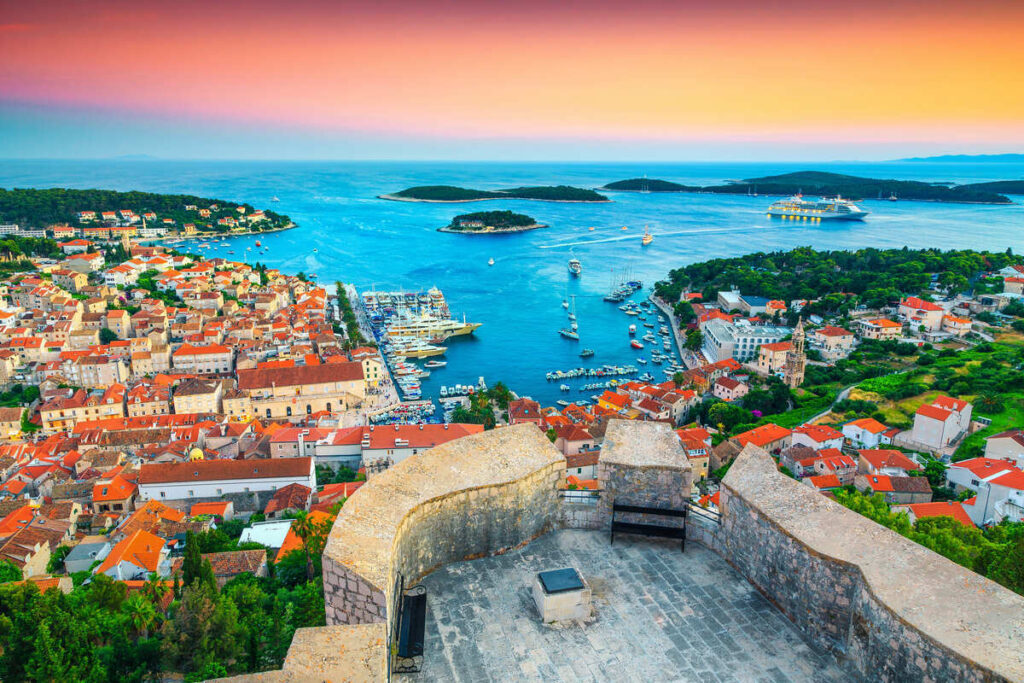No products in the cart.
Travel Guide
7 Reasons Why This European Country Is A Top Destination For Solo Travelers
Last Updated
Croatia is on the bucket list of many Americans country-hopping around Europe.
With its Mediterranean climate that provides the coastal provinces with great weather year-round, perfectly preserved historic cities, and a laid-back way of living, it competes with neighboring sunny spots Montenegro and Greece for the title of Southeast Europe’s top solo travel destinations.
Despite Greece’s ancient charm, and Montenegro’s trendiness, Croatia is still a favorite among the majority, and in this article, we will give you 7 reasons why:

It Is Perfectly Safe For Tourists
Eastern Europe has historically had a reputation for being ‘less safe’ than the more ‘developed’ West, but as the figures compiled by the U.S. State Department will tell you, we’ve now entered a new era where decades-old misconceptions no longer apply.
As part of the bloc, Croatia is one of the safest countries for solo travelers to explore, ranking as the least risky overall in a research conducted by experts at Bounce, who asked visitors whether they felt safe traveling Croatia, in a broader sense, and got a resounding yes for a response, ‘even at night and alone’.

Bounce‘s data corroborates that of the U.S. State Department’s Travel Advisory listings, where Croatia is added as a ‘Level 1 destination’. This means safety concerns are minimal, and it is about as safe as Norway, Finland, or even Iceland, considered the safest to visit in the world.
Beautiful Nature And Beaches
The Croatian coast, part of a wider historical region called Dalmatia, is one of the most beautiful bathing zones not only in Eastern Europe but the entire continent.
Top 5 Travel Insurance Plans For 2023 Starting At $10 Per Week

Situated on the Northern arm of the Mediterranean, mystically named ‘The Adriatic’, Dalmatia is a rugged, typically subtropical terrain boasting scenic coastal drives, interspersed with small, pebbly beaches and sandy crescents and a boundless natural wealth other Eastern powers find hard to rival.
If you’re a nature seeker, you should definitely pay the Plitvice Lakes Natural Park a visit. Famous for its cascading waterfalls, flowing effortlessly in the dry, hot summers and freezing over almost completely during harsh winters, it is a natural escape from the busy, overtouristed coast.

The Sljeme mountain, a short one-hour drive from downtown Zagreb, is also not to be missed, what with its numerous hiking trails, meandering creeks, and abundance of wildlife. It is particularly stunning in the colder months when snow blankets the foggy pine forest.
Diverse Tourist Offer
Croatia is – perhaps unsurprisingly – often portrayed in the media as a summer getaway.
Home to a collective of Adriatic islands lapped by the turquoise ocean and sharing a pan-Mediterranean culture with its Italian, Greek, and Spanish counterparts, Croatia – at least Dalmatian Croatia – feels indeed closer to Southern than Central or even Eastern Europe.

With that being said, reducing it to simply a beach zone is a gross mistake.
As you might have guessed already, this is a country where nature will always find ways to surprise you, whether it’s the lesser-explored alpine peaks that surround the inland capital of Zagreb, the picturesque Danube basin, or the vast, lush-green forests covering nearly a third of the national territory.
Croatia is diverse, and as a lover of nature, you will never run out of parks to explore, mountains to climb, or rivers to kayak in.
Croatia Is More Liberal Than Other Eastern European Countries

Eastern Europe has been synonymous with conservatism and backward policies when it comes to Human Rights.
From the outright prohibition of gay marriage in some countries to the endemic post-Soviet corruption observed in others, one might think Croatia and the likes of Hungary, Romania, or Moldova are all peas in the same pod.
This couldn’t be further from the truth: yes, Croatian society still has a way to go, especially regarding its acceptance of same-sex relationships, the culture is very much liberal and Western-inclined, but the role of religion in the state, albeit influential, is a lot more limited than in, say, Serbia.

The proof is in the countless LGBTQ bars and nightclubs that keep popping up in urban centers like Zagreb and Zadar, the naturist-friendly beaches, where you won’t be looked down upon when deciding to bare it all, and the locals’ carefree attitude towards life in general.
You may get the odd disapproving look from an elderly Croatian nonna holding hands with your same-sex partner in Split, but it is highly unlikely you will have abuse hurled at you.
Locals Are Friendlier To Tourists

The unfriendliness of Europeans towards Americans has become a running joke on social media channels.
Videos of tourists re-enacting the rudeness of the French or the impatience of Italian waiters as they take your orders have gone viral repeatedly in recent years, and judging by Western Europe’s staggering overtourism rates, it’s no wonder they’d want locals ‘out’.
Croatia, on the other hand, has so far been an exception, much like its close partner Bosnia and Herzegovina. For years, most notably during the nineties, tourists famously avoided vacationing in Croatia due to the bloody war resulting from the break-up of Yugoslavia.

After surviving a period when its beautiful beaches became empty, and the underground tunnels of the medieval fortress were used as bunkers by the populace to protect themselves against heavy shelling and artillery, Croatians have learned to appreciate the contribution of foreigners and the freedom they now enjoy following the traumatic Yugoslav years.
In fact, it is so friendly to foreign investment that it became Europe’s first country to launch a Digital Nomad Visa as early as 2021 when the continent’s borders were still sealed shut due to COVID, and it is now the ‘most liked’ digital nomad hub for 2023.

Tourists – and tourist dollars – are more than welcome, and as long as you show kindness and respect, and familiarize yourself with the culture, rest assured they will extend their Balkan friendliness to you.
Great Infrastructure
Croatia’s excellent infrastructure is one of the main reasons why it has become a massively popular destination for solo travelers.
You can be anywhere in the country – the Istrian Peninsula, close to Italy, or the remote Southern tip of Neretva, approaching the border with Montenegro – but you will have at least one bus in availability to get you where you need to be, as well as multiple ferry and rail connections.

Companies like Flixbus operate across the entire national territory, transporting customers from the Zagrebi metropolis to the ancient ports of Split and Dubrovnik all year round.
Trains are a bit trickier to navigate, as they run less frequently and are mostly restricted to Central and South-Central Croatia, but they are a great option for traveling at a slower pace, taking in the scenery in anticipation of the next stop.
Of course, if you’re short on time, you can always fly. Nearly all Croatian resort towns on the coast have a small domestic or international airport that serves them, linking them to other tiny aerodromes and major international hubs like Zagreb, Split, Zadar, and Dubrovnik.

A Set-Jetting Destination For TV Fans
Lastly, Croatia has risen to prominence in the past decade due to its association with the greatest television event of the 21st century, Game of Thrones.
The city of Dubrovnik, where a good portion of the external King’s Landing scenes were shot, is a natural film set featuring winding cobbled streets flanked by centuries-old stone houses, huge ramparts and fortifications, drawbridges, and hilltop forts.
If you’re a History buff or simply a Game of Thrones fan, you will find yourself stopping for pictures and re-enactments of some of the show’s most iconic moments at every turn.

Cities like Split and Sibenik are also popular among visitors keen on experiencing that Old World charm and slow Mediterranean living, though true, hardcore film fans might want to extend their time in Zadar instead, Hitchcock’s own favorite coastal spot.
According to the legendary filmmaker, ‘Zadar has the most beautiful sunset in the world,’ and having sat by the Sea Organ as the Adriatic caressed my feet, on a balmy late summer evening, with the seas reflecting the blood-orange sunset, I feel compelled to agree.
Traveler Alert: Don’t Forget Travel Insurance For Your Next Trip!
↓ Join Our Community ↓
The Travel Off Path Community FB group has all the latest reopening news, conversations, and Q&A’s happening daily!

SUBSCRIBE TO OUR LATEST POSTS
Enter your email address to subscribe to Travel Off Path’s latest breaking travel news, straight to your inbox.
This article originally appeared on TravelOffPath.com
Source link

